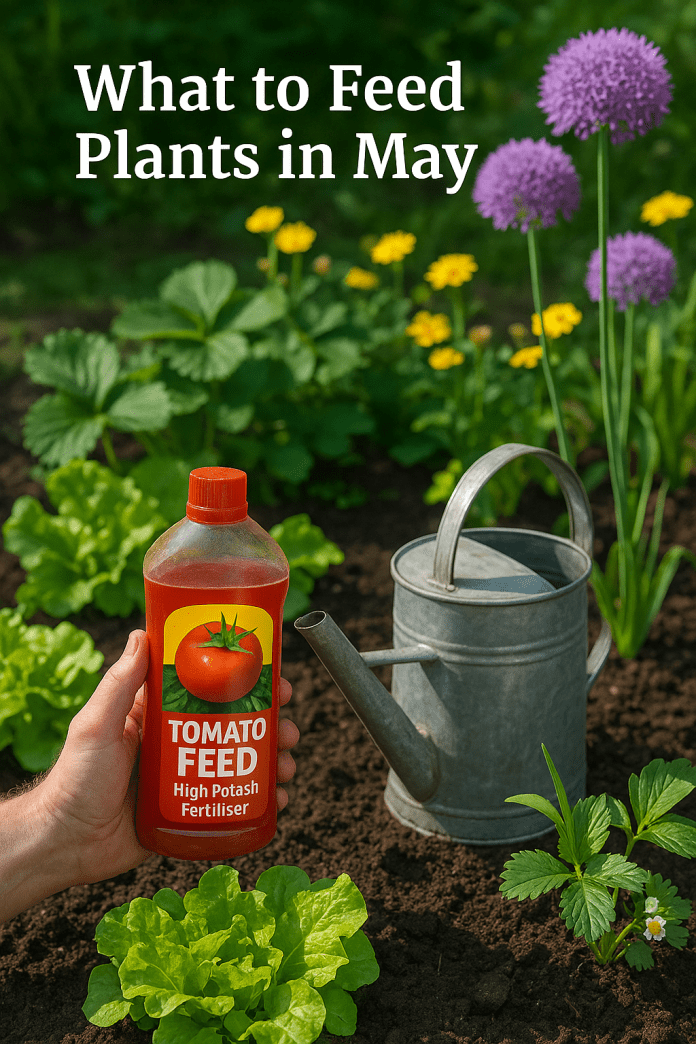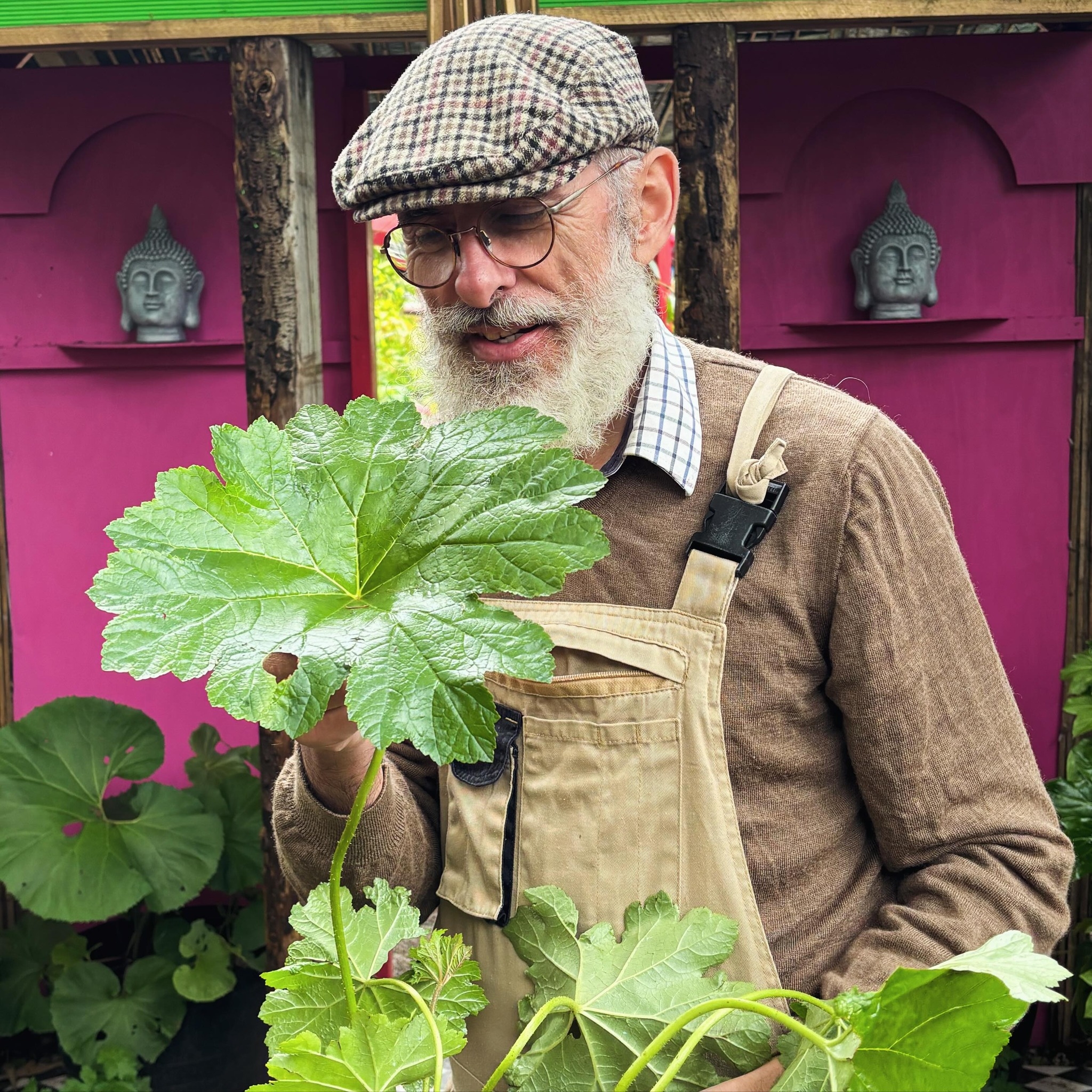May is a pivotal month in the garden. Plants are shifting from spring growth to summer performance, and feeding them well now can make all the difference. Whether you’re growing flowers, vegetables, fruit or maintaining a lush lawn, the right nutrition will boost colour, flavour, yield and overall health.
🧪 Why Feeding Matters
Plants use up soil nutrients as they grow. Some soils are naturally fertile, but many—especially in pots—can run low on the essentials. Feeding helps:
- Promote strong roots and shoots
- Encourage flowers and fruit
- Improve disease resistance
- Support lush foliage
Let’s look at what to feed different parts of your garden this month.
🌸 Flower Beds and Containers
Feed: High-potash fertiliser (e.g., liquid tomato feed, comfrey tea)
- Helps flowering plants set buds and bloom more profusely.
- Feed weekly for bedding plants, especially those in containers and hanging baskets.
Slow-release fertilisers or compost top-ups
- Mix in granular feed or organic matter to feed gradually over time.
Tip: Water plants before feeding to avoid root burn.
🥬 Vegetables
Leafy crops (lettuce, spinach, brassicas)
- Feed: Nitrogen-rich fertilisers (e.g., fish emulsion, liquid seaweed, chicken manure pellets).
- Promotes leafy, lush growth.
Fruit-bearing crops (tomatoes, courgettes, beans)
- Feed: High-potash fertilisers as flowers form.
- Potassium encourages fruit production and flavour.
Root crops (carrots, beetroot)
- Feed sparingly – too much nitrogen causes leafy tops and small roots.
🍓 Fruit Bushes and Trees
Strawberries, raspberries, gooseberries, apples, etc.
- Feed: High-potash liquid feeds every 1–2 weeks during flowering and fruiting.
- Add a mulch of compost or well-rotted manure to retain moisture and slowly feed.
Tip: Avoid feeding fruit trees too late in the season, or you’ll get soft growth instead of ripening fruit.
🌳 Shrubs and Perennials
Established shrubs and roses
- Feed: General-purpose feed (e.g., Growmore, blood fish and bone).
- Roses benefit from a dedicated rose feed, rich in potassium and magnesium.
Spring-flowering shrubs
- After flowering, feed to help them recover and put on growth for next year’s blooms.
🌱 Seedlings and Young Plants
- Feed: Half-strength liquid seaweed or balanced feed.
- Be gentle – overfeeding can scorch young roots or cause lanky growth.
🌾 Lawns
- Feed: Spring/summer lawn fertiliser with high nitrogen content to green up the sward and encourage steady growth.
- Apply after mowing and water in well if no rain is forecast.
Tip: Avoid using autumn or winter feeds in spring—they’re too low in nitrogen for active growth.
🪴 Houseplants & Greenhouse Plants
- Resume regular feeding of houseplants with a balanced liquid fertiliser every 2–3 weeks.
- Greenhouse crops like tomatoes and cucumbers benefit from weekly high-potash feeding once flowers form.
🌼 Final Tips
- Don’t feed dry plants – always water first.
- More isn’t better – follow dosage instructions.
- Choose the right feed – tailor to what you’re growing (leaf, root, fruit or flower).
Feeding in May is like giving your garden a big breakfast before a busy summer. Do it right, and your plants will thank you with vigour, colour and a bumper harvest.
Here’s a quick reference table you can include in the article for easy scanning. It summarises what to feed different types of plants in May and how often to apply it:
🌿 Quick Reference: What to Feed Plants in May
| Plant Type | Best Feed Type | Key Nutrient | How Often |
|---|---|---|---|
| Flowering annuals & bedding | Liquid tomato feed or comfrey tea | Potassium (K) | Weekly |
| Containers & baskets | Liquid feed + slow-release granules | Balanced / Potassium | Weekly (liquid) + every 6–8 weeks (granules) |
| Leafy veg (lettuce, brassicas) | Fish emulsion, chicken manure pellets | Nitrogen (N) | Every 10–14 days |
| Fruit veg (tomatoes, courgettes, beans) | Tomato feed, comfrey tea | Potassium (K) | Weekly after flowering |
| Root veg (carrots, beetroot) | Minimal feeding (compost-rich soil best) | Low Nitrogen | Only if showing deficiency |
| Fruit bushes & trees | High-potash liquid feed | Potassium (K) | Every 1–2 weeks |
| Shrubs & roses | Rose feed, blood fish & bone, Growmore | Balanced + Potassium | Once after flowering |
| Lawns | Spring/summer lawn feed | High Nitrogen (N) | Every 4–6 weeks |
| Seedlings & young plants | Half-strength liquid seaweed or balanced feed | Gentle Balanced | Every 10–14 days |
| Houseplants | Balanced liquid feed | NPK Balanced | Every 2–3 weeks |
| Greenhouse crops | High-potash feed (e.g. tomato feed) | Potassium (K) | Weekly after flowering |




